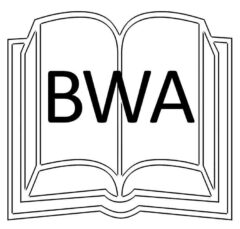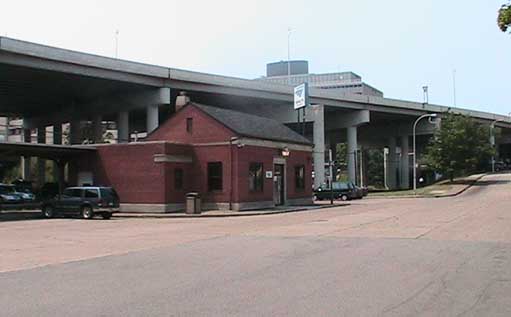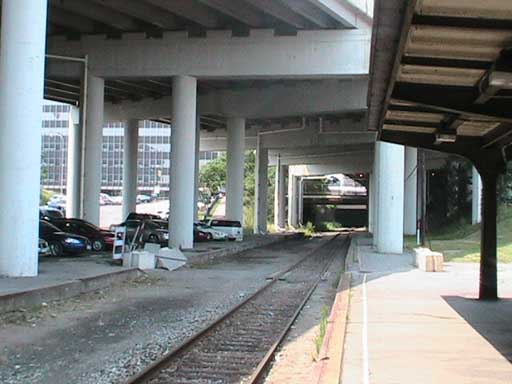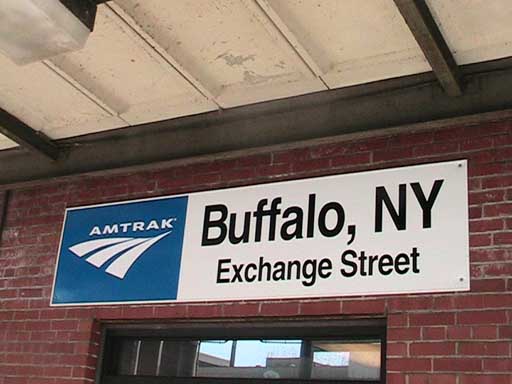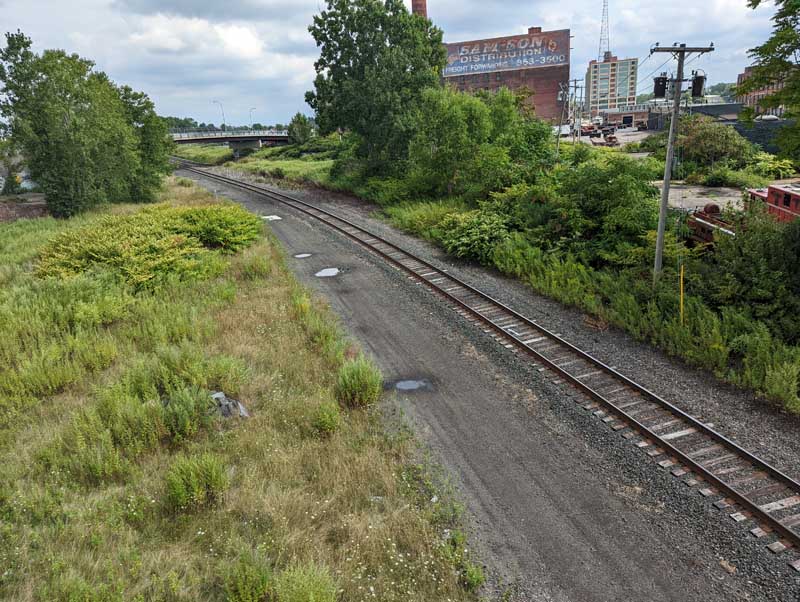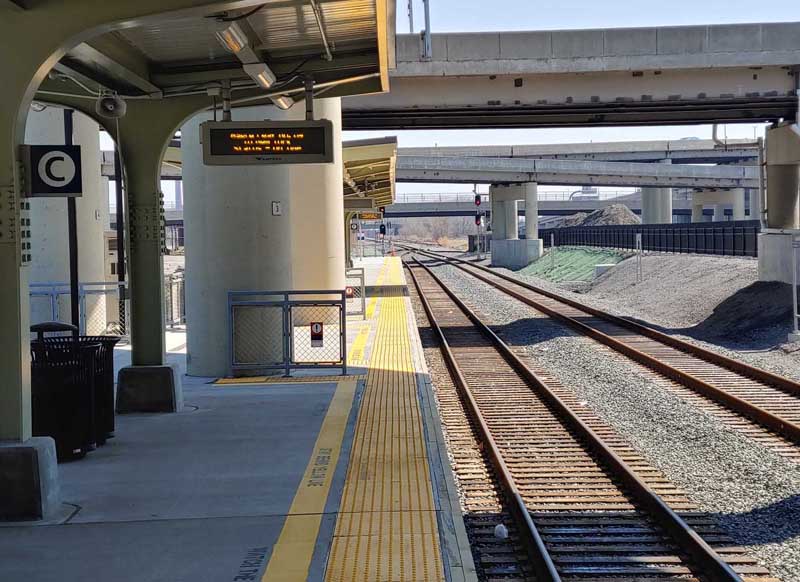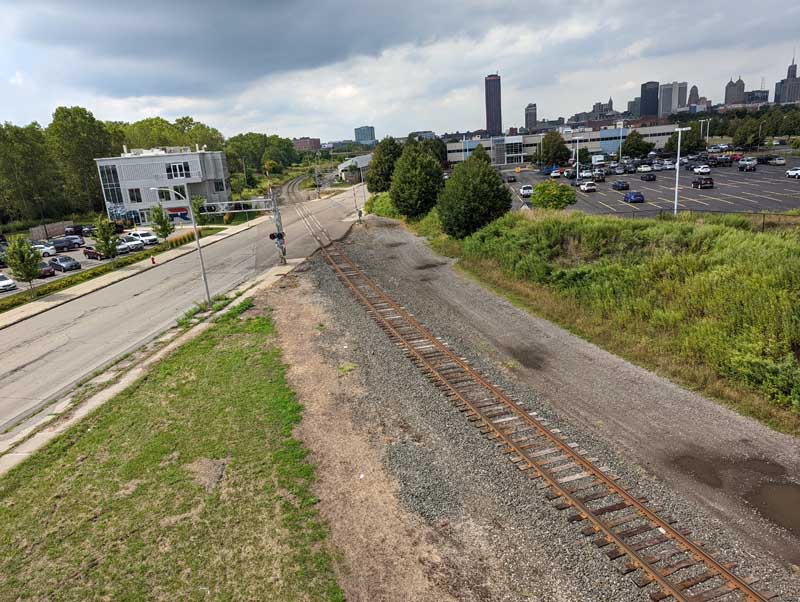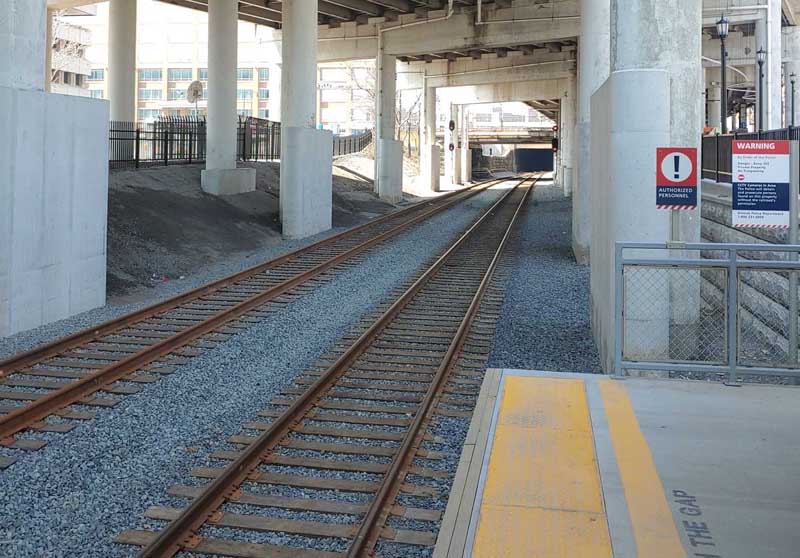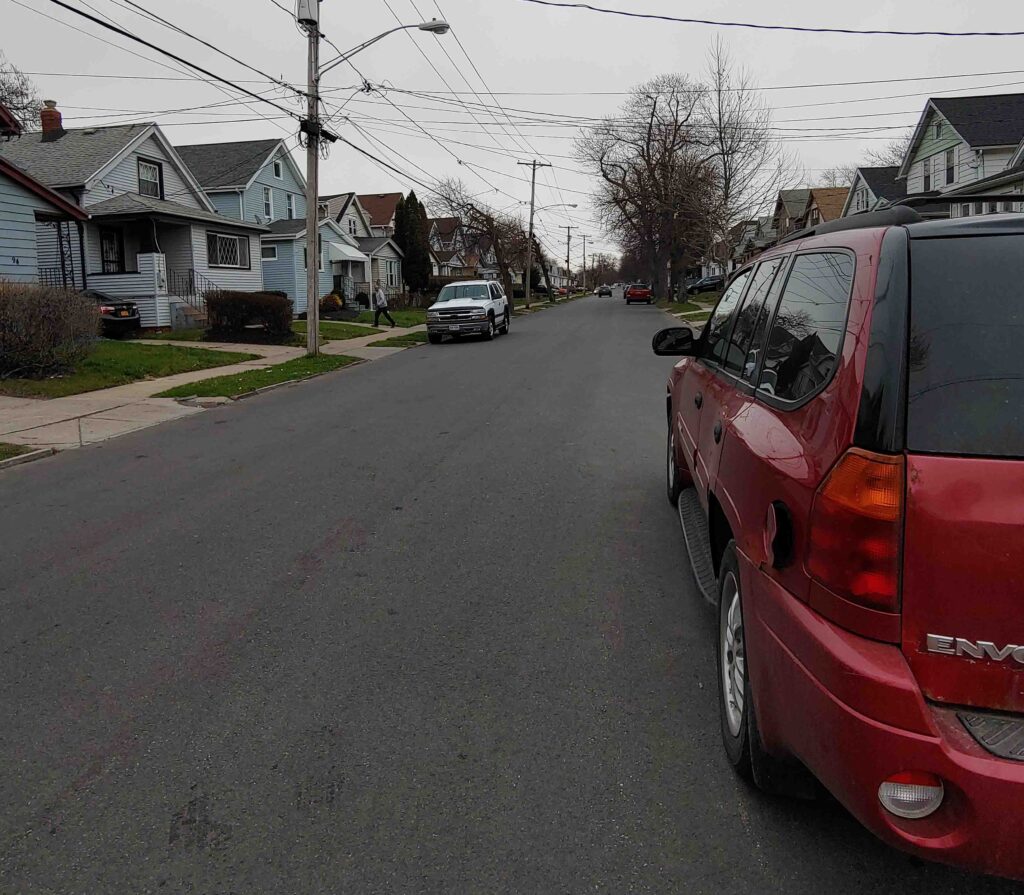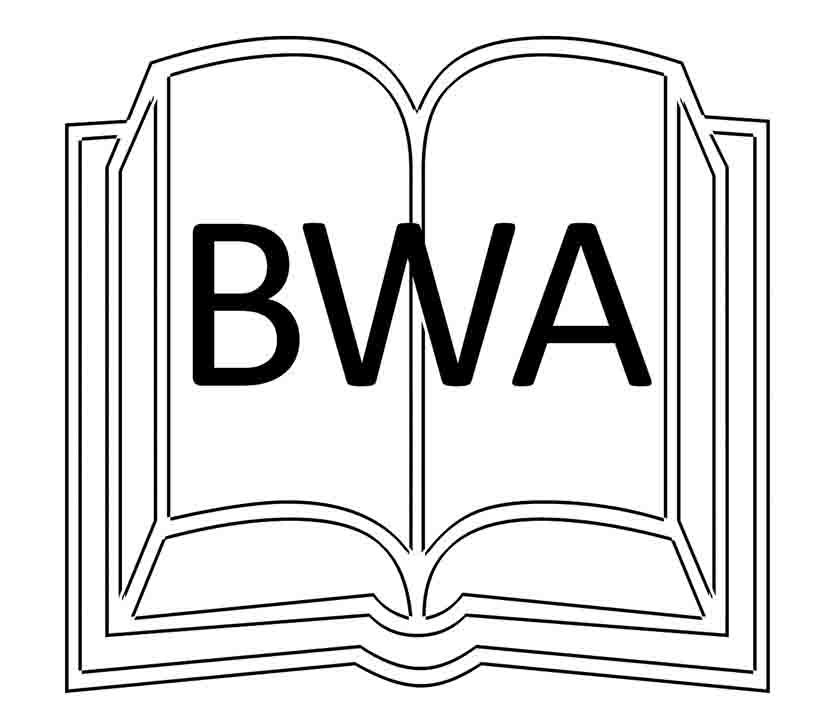
“It’s an altogether different picture from when you played at Tech to when I played, and it’s even more of a different look for the kids who are playing in the Yale Cup now. Back then the Yale Cup was not represented in Section VI. There was no state title representation or anything. This was in the late 1960s. I think they went to Section VI in 1971. Our group of athletes and the kids the year after me, we were really upset that in 1971 or 1972, they allowed the Buffalo Public Schools to play in Section VI and compete for the state championship. It was around 1971 and 72 or something like that.”
“That was one of the downfalls or pitfalls which kept our schools from being recognized because there were quite a few kids who could’ve played Division I football or basketball that were not seen at the time. You either had to be a Bob Lanier or a Gil Harmon, who were the biggest and the most athletic – Bob Lanier was 6’9” in high school; or like Marty Cott who went to Tech the same year that I did. He ended up playing baseball for the Houston Astros.”
The Hutch-Tech Boys’ Basketball Team: My Introduction To The Yale Cup
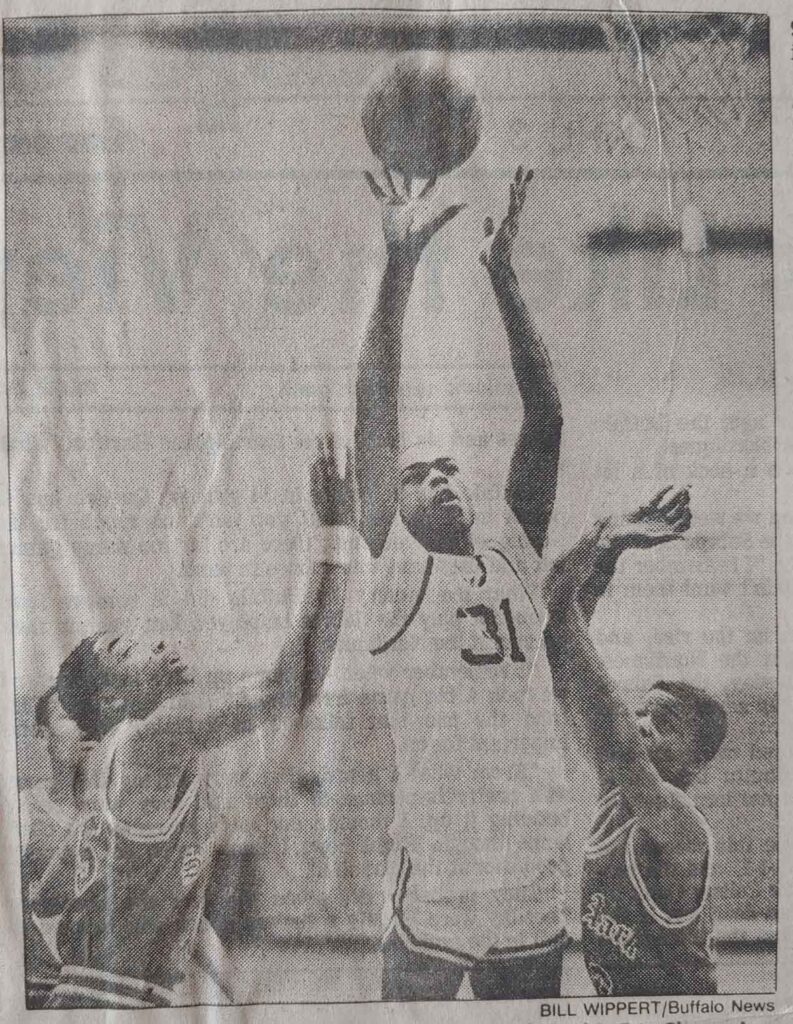
This story is another promotional piece for my two-part book project entitled, The Engineers: A Western New York Basketball Story. The previous piece paid tribute to the late Kevin Roberson. I’ve created a page here on my writer’s blog for the book, if you’re curious to learn some more about it. In the numerous pieces I’ve already created surrounding the book, I’ve shared that I’ve conducted 30-40 interviews for the project. These discussions with former players and coaches from Section VI have revealed several interesting facts.
One of the focal points for my story is the 1990-91 Hutch-Tech Boys’ Basketball Team. Our school nickname was the Engineers, for which the books are named. During my freshman year at the school, they went on a magical run. They first won the city league championship, the Yale Cup, with a 13-0 record. They then won the Section VI Class B championship, coming within one game of a berth in the Class B State Final Four in Glens Falls. From my vantage point at the time, it was a big deal, and I dreamt of doing what they did.
The Yale Cup And Section VI

While my story focuses on the Hutch-Tech Engineers, it also involves other teams from Western New York. Many of the teams are from our league the Yale Cup. It also tells the stories to a lesser extent of some of the other teams in Section VI. Even today, Section VI is the western most section of the New York State Public High School Athletic Association (NYSPHSAA). There are 12 total sections spanning from the Great Lakes to the Adirondack Mountains and finally down to Long Island.
Section VI of the late 1980s and early 1990s was comprised of many city and suburban public high schools and leagues. They were located in the numerous Western New York State counties including Chautauqua, Cattaraugus, Erie, Niagara, and Orleans. Our league was called the Yale Cup. It was a 14-team league comprised of schools within the Buffalo Public School System. At one point the Yale Cup was considered the best high school basketball league in Section VI. However, like the City of Buffalo and our region in general, it went through hard times which were arguably rooted in the loss of steel industry. This essay is a tribute to the Yale Cup as I and others knew it, and to a lesser degree Section VI.
Oh, by the way, the private school teams played in the Monsignor Martin League. I must mention them because they had some of the best players and teams in Western New York every year. Some of the schools included Cardinal O’Hara, Canisius, Turner/Carroll and St. Joseph’s.
A League Named After An Ivy League School But Wasn’t Ivy League
One of the more interesting things about the Yale Cup, was its name. I don’t know who named the league, but it seemed to have been named after the prestigious Ivy League institution of higher learning in Connecticut, Yale University. Coincidentally, our city football league was named the Harvard Cup, I guess after Harvard University. The girls’ basketball league was called the Canisius Cup, most likely after Canisius College. I don’t know who named the leagues and why, but ‘The Yale’, now affectionately referred to by some of its former players, was anything but Ivy League in quality as I’ll describe.
14 Schools Of Varying Sizes
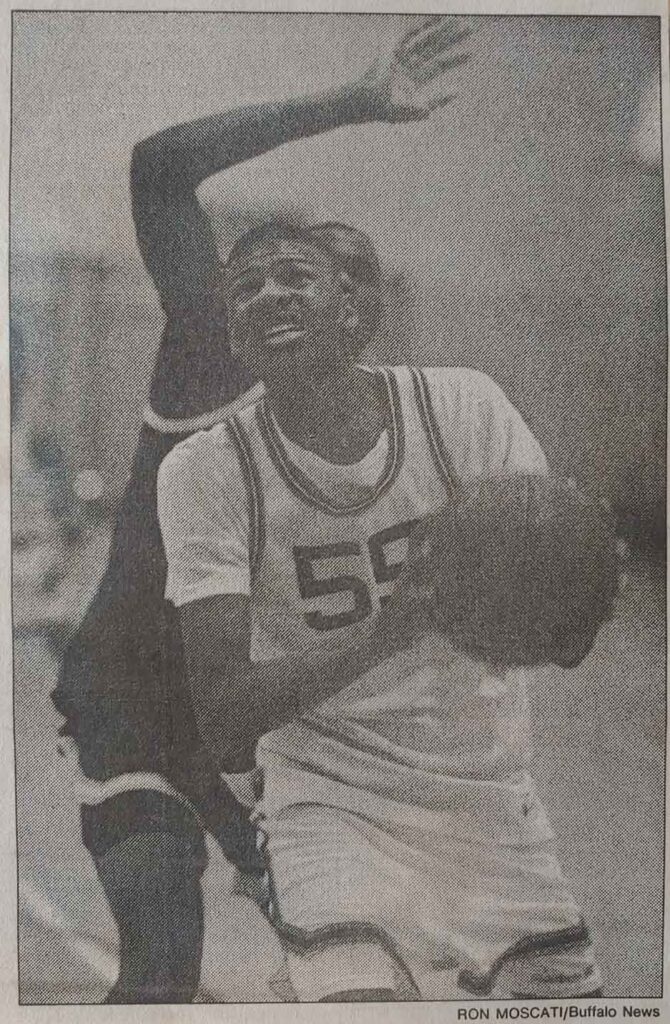
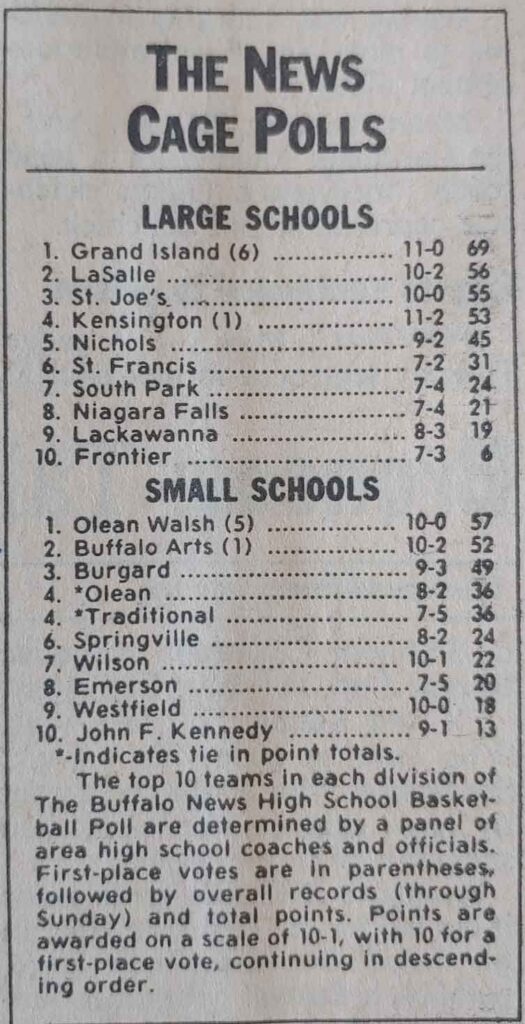
There were 14 schools in the Yale Cup of the late 1980s and early 1990s. The lineup of schools in general changed over the decades. Like the private schools, some of the Yale Cup schools were closed or consolidated for economic and logistical reasons. I think the core line up of schools remained the same though. During my youth, I heard numerous stories of an East High School. During my teen years, it was converted into the Buffalo Vocational and Technical Center (BVTC). City Honors (described below) played its home games there. The schools comprising the Yale Cup of the late 1980s and early 1990s, their nicknames and school colors were as follows:
• Bennett: The Tigers, orange and blue
• Burgard Vocational: The Bulldogs, blue and white
• Academy for the Visual and Performing Arts (aka Buffalo Arts or Performing Arts): The Cavaliers, black and gold
• Buffalo Traditional: The Bulls, navy blue and gold
• City Honors: The Centaurs, burgundy and gray
• Emerson: The Eagles, red and white
• Grover Cleveland: The Presidents, green and white
• Hutch-Tech: The Engineers, maroon and gold
• Lafayette: The Violets, violet and white
• Kensington: The Knights, lime green and gold
• McKinley Vocational: The Macks, orange and black
• Riverside: The Frontiersman, purple and gold
• Seneca: The Indians, dark green and white
• South Park: The Sparks, red, black and white

If you watch the documentary Hoop Dreams or its sequel Hoop Reality, both take place in Chicago. Watching them, you’ll see that most metropolitan areas have city leagues where most of the student athletes are black. The bigger cities actually had multiple conferences within their boundaries. With Buffalo being a smaller city, there was only one conference.
Three Phases Of The Season
“What’s about to start after the New Year is the meat and potatoes of the season! Our non-league schedule was just the gravy!” In my first year on the Hutch-Tech Boys’ Basketball Team, our coach, Dr. Kenneth Leon Jones told our team this after a lackluster start in the ‘non-league’ portion of our schedule. He further told us that our Yale Cup league play was the most important phase of the season. It brought with it the potential for a league championship. Our league record would also dictate our qualification for post season sectional play. There the final destination were potential state and federation championships for the truly elite teams.
During the next three years, as I learned about high school basketball on the fly, I realized something interesting. We only played our opponents once in league play. That is the location of the games would alternate yearly. In my first year on the team for example, Hutch-Tech hosted Riverside in our gym and that was it. This was the game that clinched the Yale Cup title for the Frontiersman that 1991-92 season, coincidentally. The next season we played in their gym.
Playing Each Other Once A Year In Conference Play

In the private and suburban school leagues, the teams played home and home series meaning that each team played in the other’s gym during league play. Likewise teams would play each other twice in one season. In some leagues, there was also a potential championship game where the top two teams in the league would battle it out for the league title. With the Yale Cup, you only got that one shot at your opponent in league play and that was it. In those days the final records determined the champions as well. This was probably because of the size of our 14-team league.
If you were in the same preseason tournament, scheduled a nonleague game or were in the same sectional class, there was the possibility of seeing certain teams again. If you were a Class A or B team in Section VI though (described below), you only got one shot at teams like Buffalo Traditional. The Bulls were the perennial power in our league who played in Class C sectional. It wasn’t ideal, but it’s what we had at the time.
The Gyms We Played In
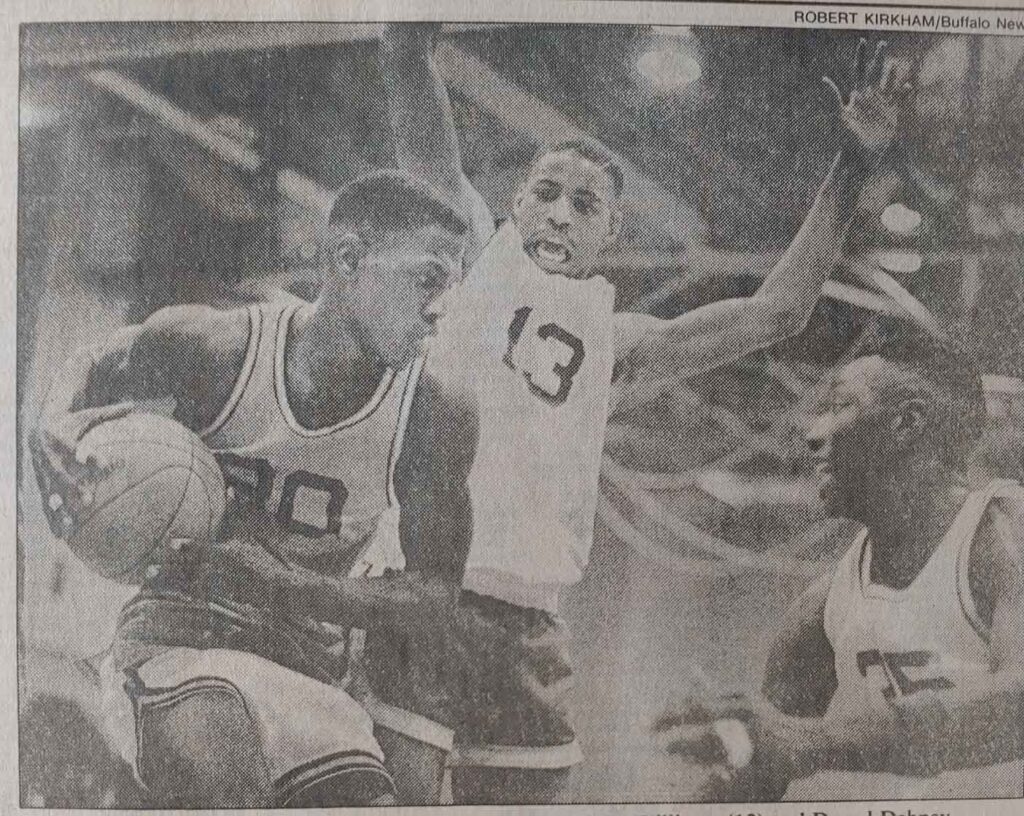
Another aspect that made our league unique were the gyms in which we played. Most of the gyms were less than stellar compared to our counterparts in private and suburban schools. City school gyms were old and antiquated. While many of us look back on it with nostalgia; the gym at Hutch-Tech was essentially a box with a shortened court. It amazingly transformed into an electric venue during games and when fans filled it. It was a less than ideal facility though. The backboards were solid white with non-breakaway rims and the seating was minimal.
At Hutch-Tech, we also had a ‘small gym’. It was a smaller box with one basket which you could barely cram 15-25 student athletes into. Our boys’ basketball team practiced there for the first hour or so of practice after school. The girls’ basketball team used our ‘big gym’ (described above) for the first hour of practice and then we swapped.
It was nothing like the modern facilities at my alma mater right now. Today there is a regulation-size court, window backboards and breakaway rims. Nor was it anything like the three gyms at my best friend’s high school, Cleveland Hill in Cheektowaga. Cleveland Hill High School was in one of the suburban conferences, the Erie County Interscholastic Conference VI (there were four of these conferences). Still, there was something special about our little old gym, and the Hutch-Tech gym was not alone, or the worst.
Playing In Older And Antiquated Gyms

“You play in some of the gyms in some of these schools and it was like you were playing in a bowling alley (laughing)!” In my interview with Buffalo Traditional legend Damien Foster, we discussed the gyms we played in for Yale Cup play. I think the gym he was referring to was at Performing Arts. It was the most unusual of all the gyms in the league. It didn’t have a regulation width, so it didn’t have a complete three-point arc. The floor was concrete-like, and it was in a room very similar to a theater. Other high school gyms, like those at Lafayette and South Park, had those cumbersome tracks overhead. They were similar to the East Ferry YMCA, so you couldn’t shoot the corner three-point shots.
The largest gyms at that time were at Grover Cleveland, McKinley, and Seneca High Schools, and maybe Emerson. This is probably why Coach Jones always had to host our Hutch-Tech Tip Off Tournaments at other schools. Safety and security were reasons why we couldn’t host sectional games. This would have involved teams and families from the suburbs coming into Buffalo at nighttime. All these factors are why it was amazing to go into the college, private school, and suburban gyms as a player and see how well equipped they were. They had bleachers on both sides of the gym, window glass back boards, breakaway rims and complete three-point arcs.
Playing In Uniforms With No Name
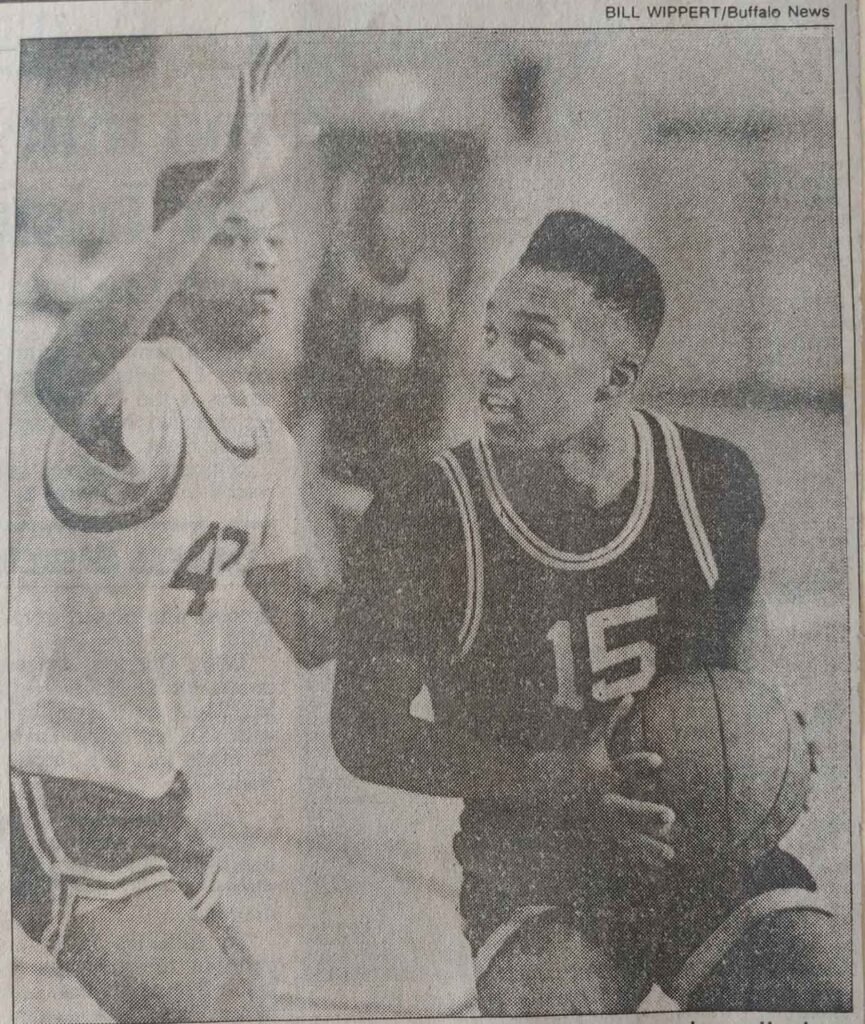
Now admittedly you must typically go to the Division I level to get players’ names put on the back of their jerseys like in the pros. Typically, in the lower levels, you would at least get the school’s name and/or nickname on the front of the uniforms. Except for City Honors, Grover Cleveland and South Park, most of our uniforms in the Yale Cup, it wasn’t that way.
“It takes a little bit more to be a Champion!” The uniforms in the late 1980s and early 1990s were made by the sports apparel company Champion. The only thing that differentiated them between the schools were the school colors. Because the pictures in the Buffalo News were black and white, you couldn’t tell the teams apart without reading the caption when the teams were featured. If you were familiar with the teams and players, you knew who was who. The uniforms all had the same block numbers and were all made with the same thick polyester or nylon, non-mesh fabric. I have fond memories of our old maroon and gold Hutch-Tech uniforms though.
A Lack Of Feeder Systems For The Varsity Teams

In my research for The Engineers, the above-mentioned Coach Ken Jones and I talked about was the lack of a feeder system for the Yale Cup varsity basketball teams. The Buffalo News coincidentally wrote about this a season or two after I graduated from Hutch-Tech. Simply put, there were no official modified or junior varsity (JV) programs to feed the varsity programs. Thus, most of the players had to make the varsity team and learn on the fly if they weren’t receiving any training outside of school. See my interviews with Jason Rowe, Damien Foster and Tim Winn. That said, the best team in any given year could have been the most athletic team, the most talented or the healthiest team (or some combination of the three).
Some of the coaches at the time, including Coach Jones, attempted to create ad hoc JV teams and the games. They did this for the most part with no extra pay, and there was thus no official JV league. Most of the games were likewise played on Saturday mornings. All our classmates were still at home sleeping or doing something else, and thus few people saw them. For suburban schools the JV games were often scheduled and played at night before the varsity games. This was significant becasue classmates, relatives and the entire community could come out and support them which was a big deal as a player.
One Of Many Legendary Yale Cup Coaches
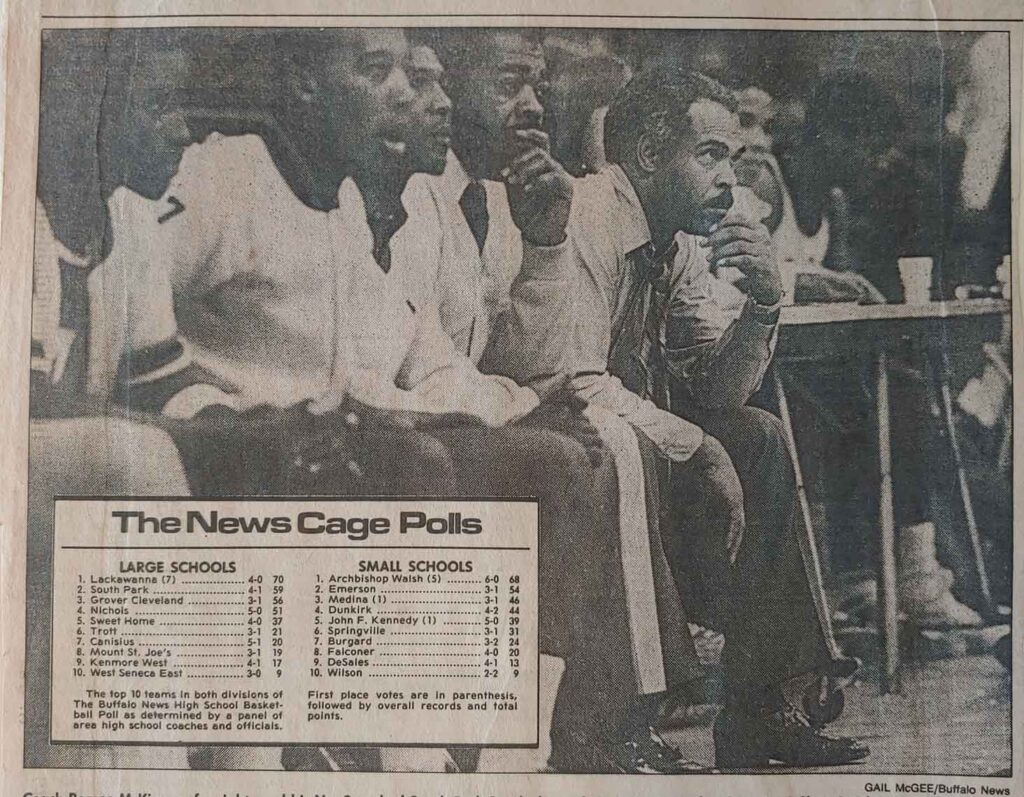
“You don’t know who Romeo McKinney is?” One of my interviewees for this project was Carlos James Gant from City Honors. City Honors was the other ‘academic’ school in the Yale Cup. They experienced their own basketball resurgence during my four years with players like Gant himself, Shaun Nelms, and their highly talented big man Larry Gilbert. During our discussion, Gant shared with me that the legendary Romeo McKinney helped coach their team during the 1992-93 season. He taught them a trapping style of defense which contributed to their increased level of competitiveness that season. By their senior year, they had an exceptional team, but they ascended at the same time as the above-mentioned Jason Rowe– and Damien Foster-led Buffalo Traditional Bulls.
I believe Coach McKinney was the coach of the South Park team that was involved in the infamous fight with Christian Laettner’s Nichols team at the Buffalo’s Memorial Auditorium. I think he finished out his coaching career at Kensington. Carlos Gant was surprised that I didn’t know who he was. A recurring theme of my story is that I only started learning about Section VI basketball in the early 1990s, and even then, my coach never talked about him. There were several legendary Yale Cup coaches over the years just like Coach McKinney.
Varying Qualities Of Coaching
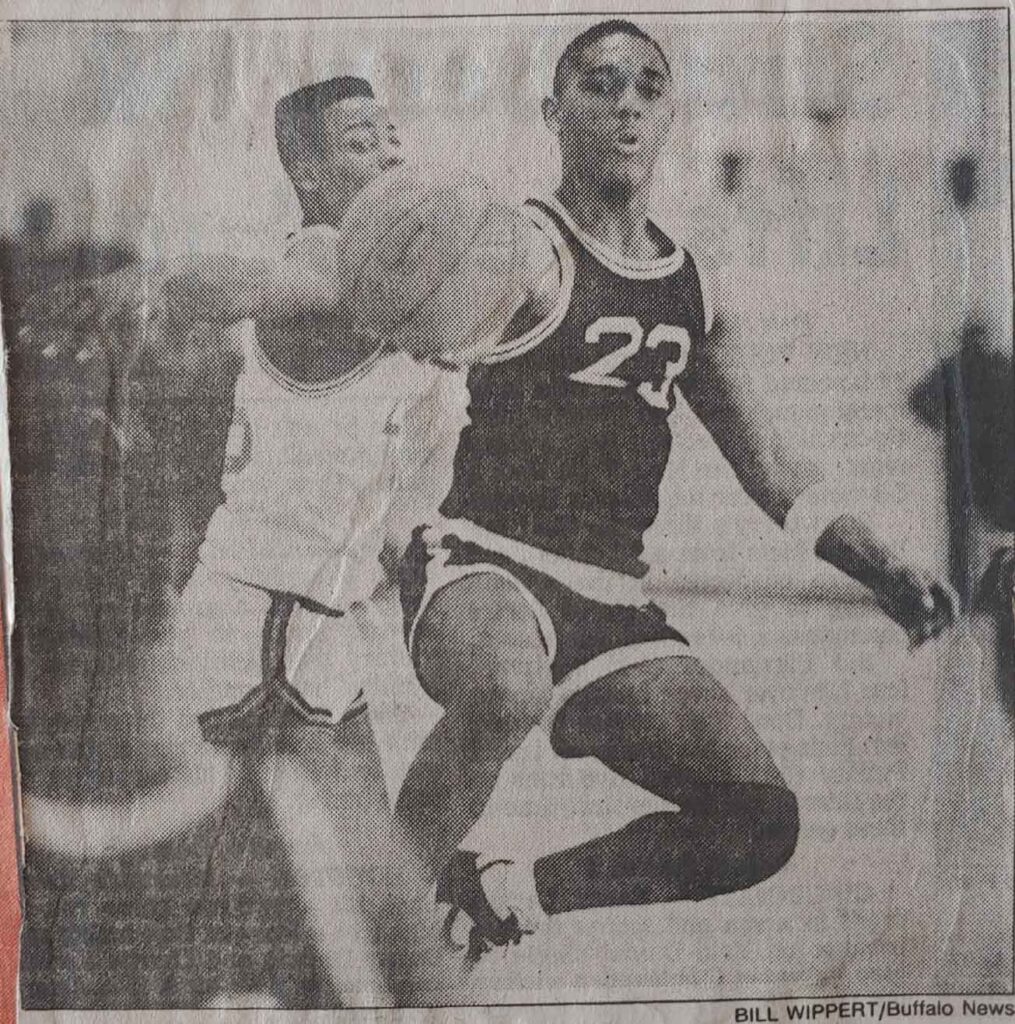
My coach at Hutch-Tech, Dr. Kenneth Leon Jones, called himself a ‘true student of the game’ and was in fact a basketball junkie. His program was an extension of himself and was very organized and textbook. The suburban and private school coaches were likewise amazed by the disciplined style of basketball Coach Jones’ majority black rosters played. The Yale Cup teams had developed the reputation for not playing defense or with structure of any kind. It was considered a ‘renegade’ league as stated by Adrian Baugh, another key contributor on the above-mentioned Buffalo Traditional teams.
From the interviews I conducted I learned that the quality of coaching in the league also varied from school to school. While researching The Engineers, I found that not every coach in the Yale Cup was in fact a trained coach, who approached the game as a craft. Some of them were simply faculty at their schools or gym teachers. Likewise, not every coach taught the game and treated it like a craft. Not every coach genuinely cared about his players, or what happened to them once they left the doors of their schools. The coach you got was arguably a matter of fortune and luck.
Playing Different Numbers Of Games
“We were one of the only city schools to play a full 20 games. Remember, at that time there were 14 high school teams in the city, and you only played those 13 teams if your coach didn’t give you another 6-7 games to fill out your full 20 games. Russ did that,” said Ed Harris, a star guard from Riverside’s above-mentioned Yale Cup and Class C Section Team in our interview. Ed attributed his Coach Bill Russell’s dedication to his playing development. “He had us playing the Frontiers, the Oleans, the Fredonias – going out there and playing John F. Kennedy (JFK), Williamsville East, South and North.”
Harris’ words described the fact that not every Yale Cup coach scheduled games outside of their 13 Yale Cup league games. This meant that their players didn’t get exposure to other styles of basketball and may not have started playing games until the new year. After interviewing Coach Russell, he turned out to be a lot like my coach at Hutch-Tech in that he put together a complete non-league schedule. He also cared about his players and did extra things for them like getting them into summer leagues and taking them with him to scout opponents.
Our League Games Were Immediately After School
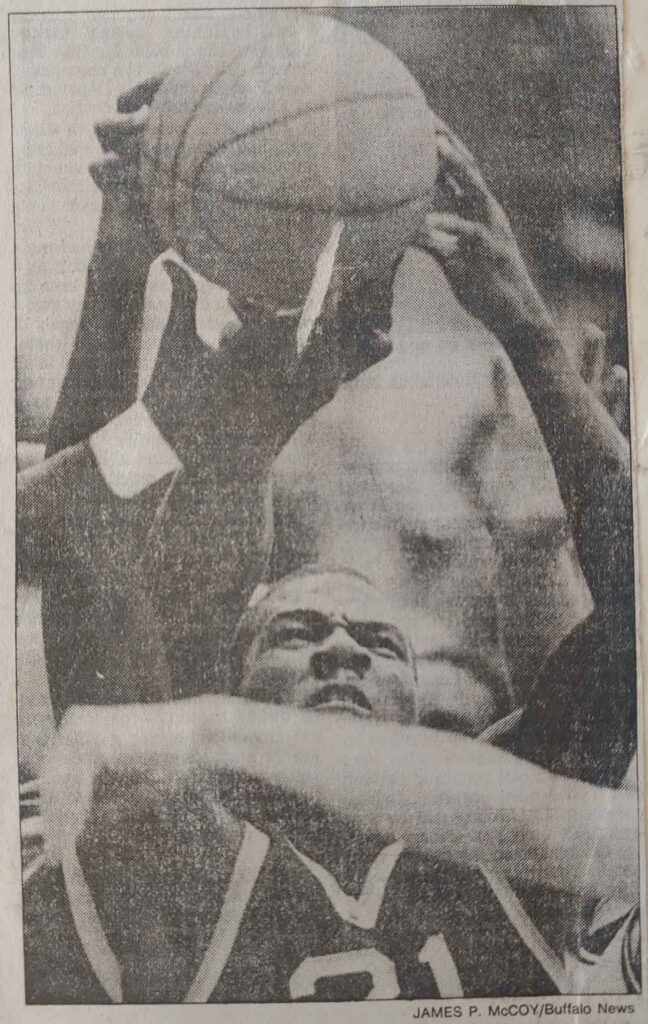
Another interesting thing about the Yale Cup is that our games were immediately after school. If students were allowed into the games, this was advantageous for the home teams. Students weren’t allowed into games at every school though, due to safety considerations.
But what about the players on the teams; the visiting teams in particular? If you were the visiting team, you had to leave your last class early, which I’m sure none of the students took issue with. Unfortunately, none of the city schools had their own buses so players had to catch public transportation to the opposing school. This meant that team members could trickle in at varying times, sometimes after the games had started unless the coaches had a way of transporting the entire group.
Another consequence of this was the difficulty for many of the parents and relatives to come to our games. Many were still working at 3:30 pm in the afternoon. If they worked a 9-5 job, many parents could not get out of work early. As a player, having relatives in the stands can be very, very important psychologically.
Visits From The Trainer Once A Week And Wasted Talent
As described, none of our schools had their own individualized transportation. Nor did we have our own athletic trainer. We had a student trainer who came in from Canisius College to check on injuries once a week. It was better than nothing, but if a student athlete didn’t have the proper specialized medical care at home, injuries could linger and destroy whole seasons altogether. I experienced something like this during my journey.
Some of the players I interviewed suggested that there was a lot of wasted talent in the Yale Cup of the late 1980s and 1990s. The lack of a feeder system was mentioned earlier in this piece, but there was also academics. Some of the more talented players also didn’t receive the proper academic guidance to prepare to play at the next level. Specifically, some players weren’t prepared to take and achieve competitive scores on the standardized tests (SATs and ACTs). As a result, they never went on to play college basketball, and if they did, they had to play in junior college first. Some of them didn’t get to play at the Division I level at all, which they may have had the talent to do.
The Players That Emerged
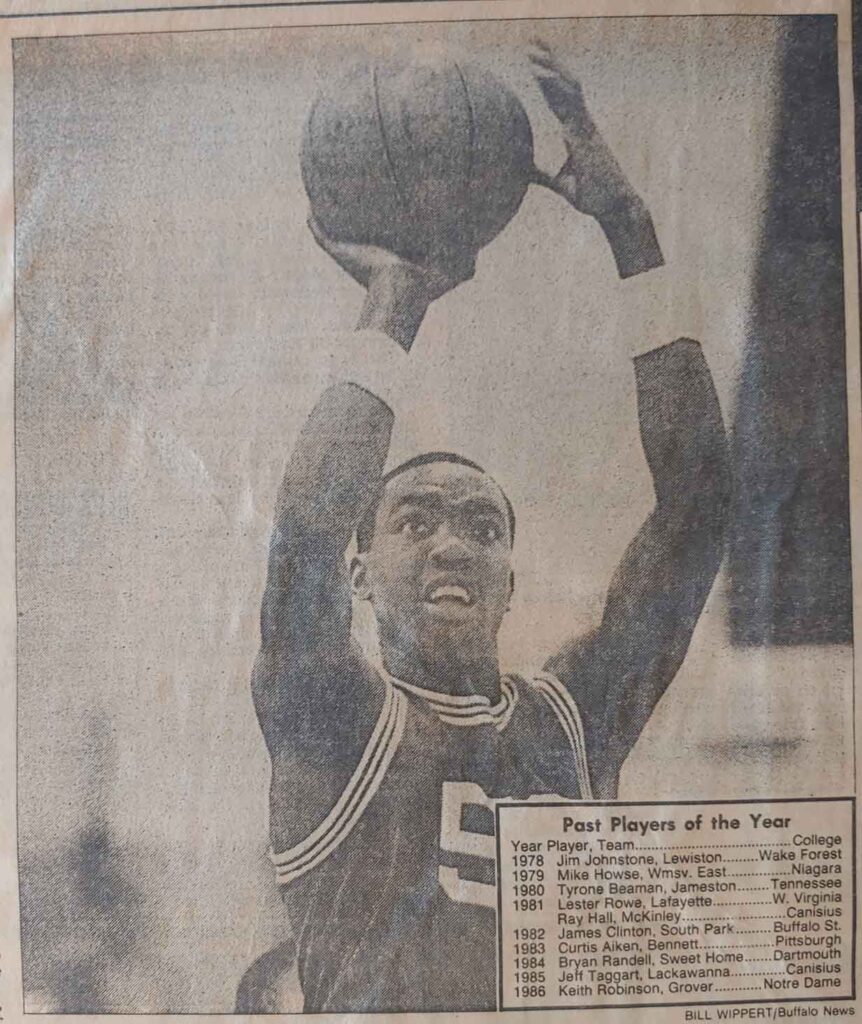
The opening excerpt for this piece was from my interview with my cousin, Coach Phillip Richardson. When we spoke, it was amazing to hear that he and his peers didn’t compete in Section VI postseason play. Thus, they didn’t have the opportunity to compete for the state or federation championships. They simply put their basketball uniforms away and prepared for baseball or track after a league champion was determined. A few years after Coach Richardson graduated from Bennett High School the rules changed. Competing in Section VI’s postseason play was commonplace for the Buffalo Public Schools 20 years later when it was time for me to go to high school.
In this snippet, Coach Richardson stated that there were several talented players who didn’t get the opportunity to play Division I basketball because of the lack of exposure. Some players did make it though over the years. Among them were Bob Lanier (Bennett), Ray Hall (McKinley), Curtis Aiken (Bennett), Lester Rowe (Lafayette), Cliff Robinson (Riverside), and Keith Robinson (Grover Cleveland). There was also Trevor Ruffin (Bennett), and Jason Rowe and Damien Foster (both from Buffalo Traditional). After I graduated, there was Damone Brown (Seneca) and Mark Price (Riverside). There were also numerous Yale Cup players who played at the Division II and III levels.
I also must acknowledge a couple of guards. There was the great tandem of Ritchie Campbell and Marcus ‘Ice Cream’ Whitfield (Burgard). There was also Antoine Sims (Grover Cleveland and Turner/Carroll) and Jeremiah Wilkes (Burgard and Cheektowaga Central). I don’t know where their paths led after high school. They all played at a high level though. There were so many players and I may have missed some names. If so, please mention them in the comment section below.
Competing In Section VI

In my era, Yale Cup schools competed in Section VI Classes A, B, C in postseason play. Again, the letters designated the size of the school. Classes A and B designated the larger schools and C the smaller schools. The Buffalo News made a similar distinction in its weekly ‘Cage Polls’. None of the schools competed in Class D.
Postseason sectional play was arguably the most magical part of the season because we were now competing with the suburban teams and potentially teams from places like Grand Island and Niagara Falls in a one-game elimination format. This post season play could ultimately lead to a game with the Rochester area champions in the Far West Regionals. There a trip to Glens Falls was at stake. Only a few teams ever made it that far.
A Look Back At The Yale Cup Of Years Past From A Former Burgard Bulldog
“But going back to the junior year, when Gene exploded onto the scene and made All-High and Honorable Mention All-Western New York, the scouts came out and whatever. As a matter of fact, when Gene was a junior, we were playing Tech. The scouts came to scout a guy named Roger Brown because he was Mr. Everything that year. Gene played a good game, but we lost to Tech.” One of the most powerful interviews for The Engineers was with my Uncle Anthony (Tony) Harris. Uncle Tony played at Burgard in the 1960s with the legendary Eugene Roberson and corroborated much of the same information shared by the above-mentioned Coach Richardson.
“Tech had the Cott brothers, Orv and Marty Cott, back then and they had a couple of other stars. Gene had a spectacular game, but we lost.” My Uncle got excited talking about those days and I became equally excited listening to him reflect. As a part of my story, I learned that our family patriarch had a basketball history himself – he was All-High Honorable Mention! This is an important part of my story. I found out about it after my playing days.
“I mean there were some bad people (in a good way) back then. There were a couple who were really good like Bob Lanier. Bennett just ran over everybody, and East had some really good players too. Bennet’s team was so strong that all five guys should have made All-High, but they couldn’t.” Uncle Tony continually emphasized the number of strong players in the Yale Cup season he played in, and you could just feel it when he spoke. We spent a lot of time discussing Bob Lanier and the Bennett High School teams, and so many others.
“My main claim to fame was that Lanier was averaging 26 points per game, and I held him to 24 (laughing),” my uncle joked. “Of course, they took him out, so he sat on the bench in the last quarter. He almost sat out a whole quarter.”
Section VI’s Basketball Diamond In The Rough

“I always wanted to play against each of the city schools. When I was a ‘youngin’ just learning how to play the game – if you go back to when I was a freshman, I can tell you every school had a guy or two guys that could ball. At South Park, you had Damone Solomon along with those Hutchinson boys,” Riverside’s Ed Harris enthusiastically said about the Yale Cup during our era. It was like what my Uncle Tony said about his era 20 years earlier.
“You go to Emerson, and you’ve got Shawn Cunningham. You go to Burgard and you’ve got Ritchie (Campbell) and you got the Pat Jones kid. Each of those teams had guys on them that could play,” Ed Harris continued. “That’s when city ball was city ball. You had a chance to do something, and I looked forward to playing those guys, you know?”
Celebrating The Yale Cup
I’m hoping that this piece came off more as a tribute to our beloved league and not a pity party. I personally still get butterflies thinking about those games in the old gyms, our uniforms, and the school colors. We played in lesser conditions than our counterparts at the private and suburban schools. Still, there was nothing like that feeling of competition no matter where it was and who it was against. Those were fun times.
Again, the Buffalo News covered much of this in writings by Jerry Sullivan, Mike Harrington, the late Allen Wilson and others. While working on this ambitious project it was necessary to revisit the Yale Cup and all its aspects. As a writer, promotion is a major consideration. You also must set the story world for your readers, and the story world for my project is the Yale Cup and Section VI.
Playing Yale Cup Basketball
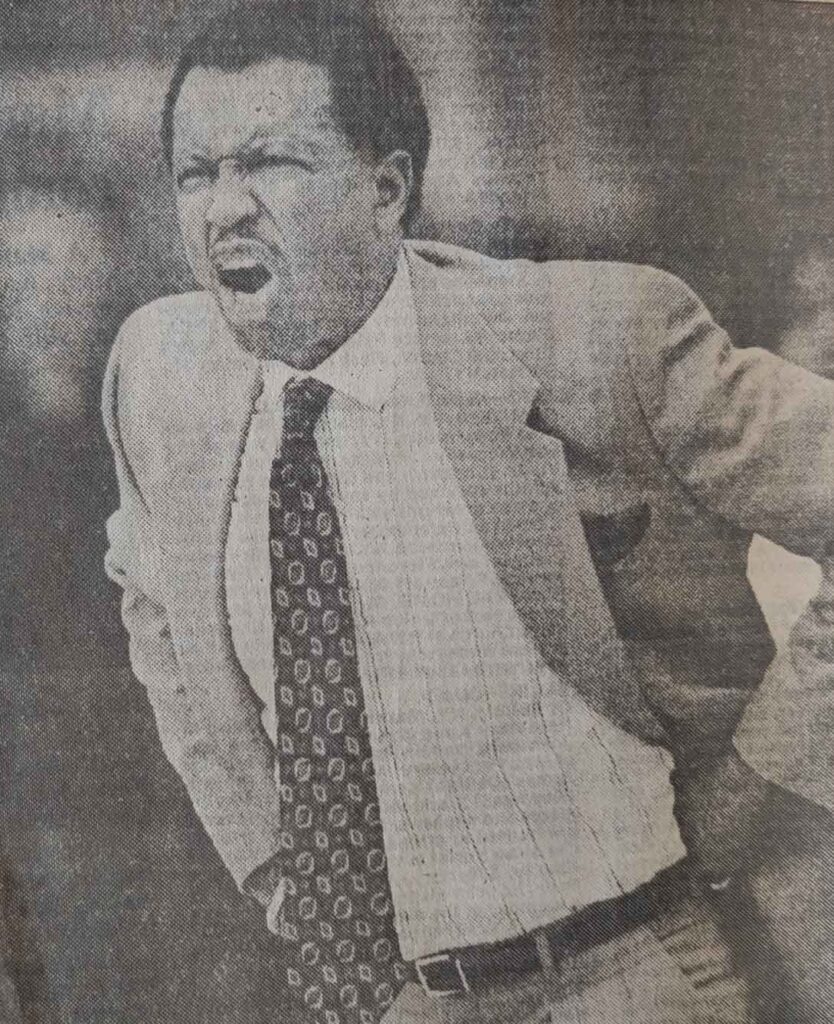
I’m closing this piece out with one more Yale Cup coach some of you may be familiar with. Bob Mitchell (pictured) was the Head Coach of the Kensington Boys’ Basketball Teams in the early 1990s. Just as in the picture, the times we played Kensington, I remember him wearing suits and being a fiery coach. Names I think of when I think of those Knights teams are Taka Molson, Radaun Hill and Kilroy Jackson who were all stars on their squads. The Knights were generally athletic, long, physical and tall. They played zone defenses and liked to get out in the open court and run like racehorses. Furthermore they liked to score the ball in transition via dunks and layups. They played Yale Cup basketball.
One of my many interviewees likewise played on the Kensington Boys’ Basketball Team, Coach Samuel “Quinn” Coffey. I thus got a feel for what it was like to wear the green and gold. In another promotional piece for The Engineers, I plan to discuss the difference between coaches who set out to build basketball programs versus simply assembling teams. As described earlier in this piece, it was different for all of us, depending upon which schools we attended, and which coaches we played for.
Closing Thoughts
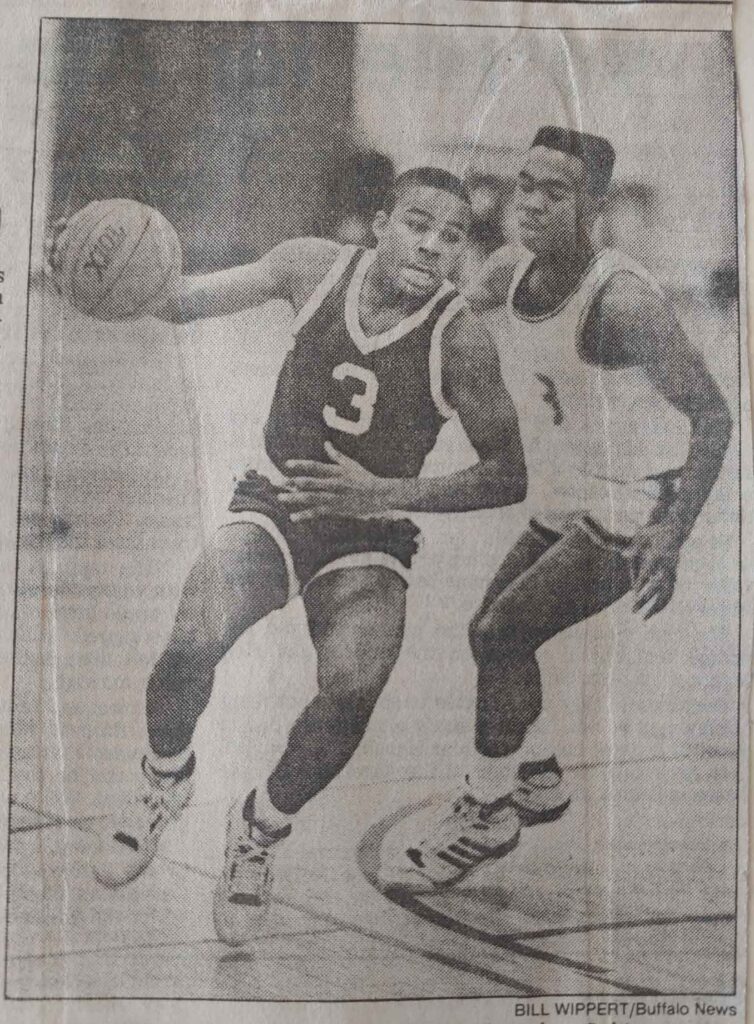
Thank you for reading this piece. As you’ve seen, I’ve used numerous pictures from the Yale Cup and players from the 1980s and 90s. These images came from an archive of Section VI basketball, carefully assembled over the years from issues of the Buffalo News. Dr. Kenneth Leon Jones, my first Coach at Hutch-Tech created this archive. Coach Jones was a mentor, a father figure, and is a central in my story. None of this would’ve been possible without him.
While this piece focused on the Yale Cup and Western New York high school basketball in the late 1980s and early 1990s, the themes are universal. They thus may apply to the basketball league you played in as a youth wherever you grew up. Thus, feel free to share your high school basketball experiences and memories in the comments section below. And especially if you played in the Yale Cup, please share any of your experiences below.
More Promotional Pieces On The Way

I’m creating more promotional/teaser pieces for The Engineers: A Western New York Basketball Story. These will be via print and video as I journey through the final steps of the book’s completion. I created a page here on Big Words Authors for the purpose of giving a background of the book and grouping all the promotional narratives such as this in one place for interested readers. On my first blogging platform, the Big Words Blog Site, there are interviews with some the most accomplished Section VI players from my era including: Jason Rowe, Tim Winn, Carlos Bradberry and Damien Foster. I also interviewed legendary LaSalle Head Basketball Coach, Pat Monti. Finally, there are more essays related to my book project. If you liked this piece, please share it on your social media and feel free to leave a comment.
The Big Words LLC Newsletter
For the next phase of my writing journey, I’m starting a monthly newsletter. It will promote written and video content from the Big Words LLC. In it, I plan to share inspirational words, pieces from this blog and my first blog, and select videos from my four YouTube channels. Finally, I will share updates for my book project The Engineers: A Western New York Basketball Story. If you sign up, I promise that I will protect your personal information and privacy. Click this link and register using the sign-up button at the bottom of the announcement. If there is an issue with the sign up form, you can also email me at [email protected] . Regards.
